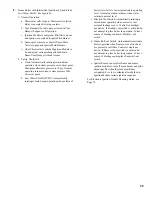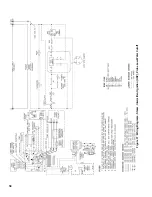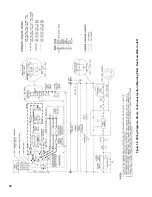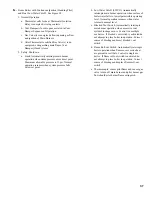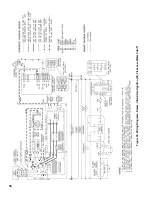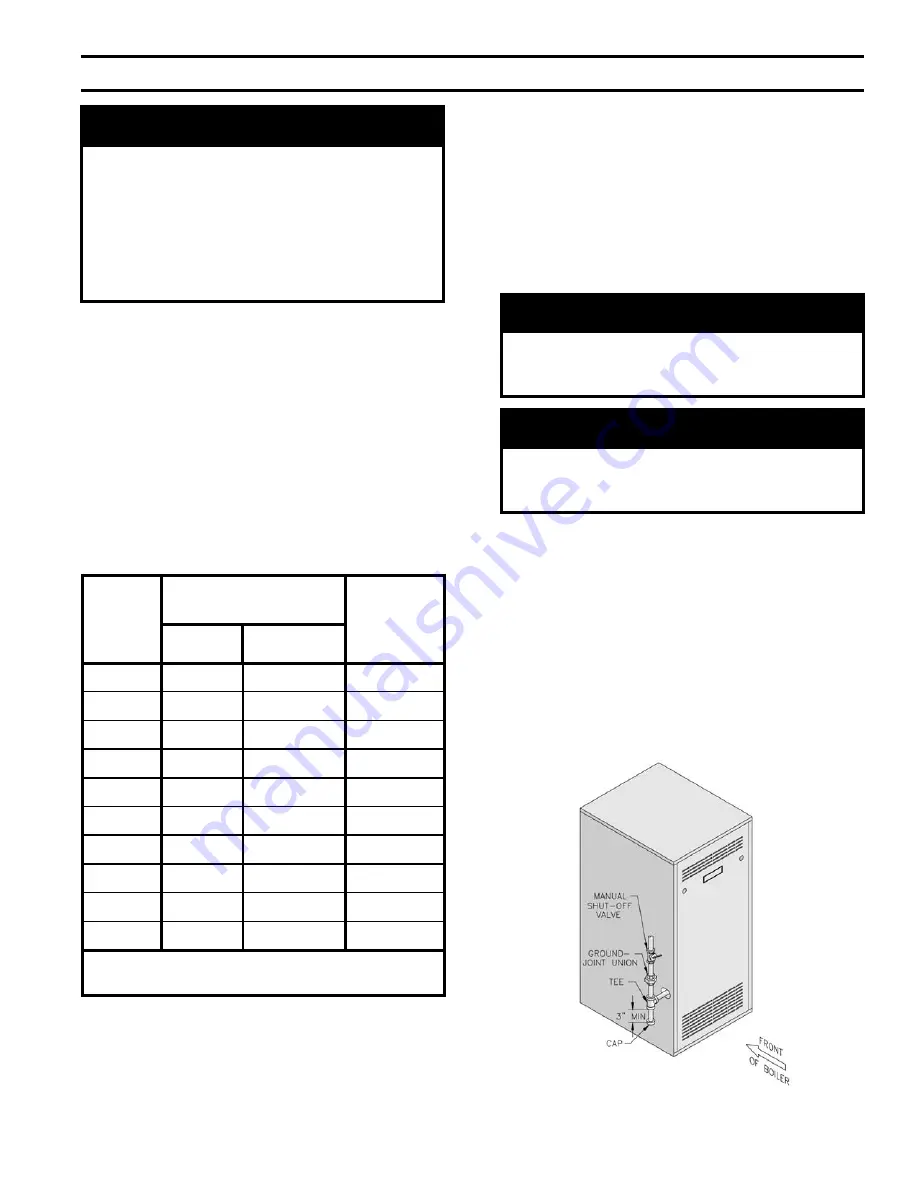
23
VI. Gas Piping
G
N
I
N
R
A
W
o
t
y
l
p
p
u
s
s
a
g
e
p
i
p
y
l
r
e
p
o
r
p
o
t
e
r
u
li
a
F
d
n
a
n
o
i
t
a
r
e
p
o
r
e
p
o
r
p
m
i
n
i
t
l
u
s
e
r
y
a
m
r
e
li
o
b
s
y
a
w
l
A
.
e
r
u
t
c
u
r
t
s
r
o
r
e
li
o
b
e
h
t
o
t
e
g
a
m
a
d
e
e
r
f
k
a
e
l
y
l
e
t
u
l
o
s
b
a
s
i
g
n
i
p
i
p
s
a
g
e
r
u
s
s
a
e
h
t
r
o
f
e
p
y
t
d
n
a
e
z
i
s
r
e
p
o
r
p
e
h
t
f
o
d
n
a
.
d
a
o
l
d
e
t
c
e
n
n
o
c
y
a
m
r
o
t
a
l
u
g
e
r
e
r
u
s
s
e
r
p
s
a
g
l
a
n
o
i
t
i
d
d
a
n
A
.
r
e
il
p
p
u
s
s
a
g
t
l
u
s
n
o
C
.
d
e
d
e
e
n
e
b
A.
Size gas Piping.
Design system to provide
adequate gas supply to boiler. Consider these factors:
1. Allowable pressure drop from point of delivery to
boiler. Maximum allowable system pressure is ½
psig. Actual point of delivery pressure may be less;
contact gas supplier for additional information.
Minimum gas valve inlet pressure is indicated on
Rating Label, located on the vestibule panel.
2. Maximum gas demand. Table 2 lists boiler input
rate. Also consider existing and expected future gas
utilization equipment (i.e. water heater, cooking
equipment).
Table 2: Rated Input
jurisdiction specifies a gravity factor be applied. For
specific gravity greater than 0.70, apply gravity
factor from Table 5. If exact specific gravity is not
shown choose next higher value.
For materials or conditions other than those listed
above, refer to the
National Fuel Gas Code
, NFPA
54/ANSI Z223.1 and/or CAN/CGA B149
Installation Codes, or size system using standard
engineering methods acceptable to authority having
jurisdiction.
G
N
I
N
R
A
W
n
o
s
d
n
u
o
p
m
o
c
d
a
e
r
h
t
r
e
p
o
r
p
e
s
u
o
t
e
r
u
li
a
F
f
o
s
k
a
e
l
n
i
t
l
u
s
e
r
y
a
m
s
r
o
t
c
e
n
n
o
c
s
a
g
ll
a
.
s
a
g
e
l
b
a
m
m
a
l
f
G
N
I
N
R
A
W
e
b
t
s
u
m
m
e
t
s
y
s
d
n
a
r
e
li
o
b
o
t
y
l
p
p
u
s
s
a
G
r
o
g
n
il
l
a
t
s
n
i
o
t
r
o
i
r
p
f
f
o
t
u
h
s
y
l
e
t
u
l
o
s
b
a
.
g
n
i
p
i
p
s
a
g
r
e
li
o
b
g
n
i
c
i
v
r
e
s
B.
Connect boiler gas valve
to gas supply system.
1. Use methods and materials in accordance with local
plumbing codes and requirements of gas supplier. In
absence of such requirements, follow the
National
Fuel Gas Code
, NFPA 54/ANSI Z223.1 and/or
CAN/CGA B149 Installation Codes.
2. Use thread (joint) compounds (pipe dope) resistant
to action of liquefied petroleum gas.
3. Install sediment trap, ground-joint union and manual
shut-off valve upstream of boiler gas valve and
outside jacket. See Figure 29.
3. Length of piping and number of fittings. Refer to
Table 3 for maximum capacity of Schedule 40 pipe.
Table 4 lists equivalent length for standard fittings.
4. Specific gravity of gas. Gas piping systems for gas
with a specific gravity of 0.70 or less can be sized
directly from Table 3, unless authority having
Figure 29: Recommended Gas Piping
r
e
li
o
B
l
e
d
o
M
r
e
b
m
u
N
y
ti
c
a
p
a
C
d
e
t
a
R
]
r
u
o
h
r
e
p
t
e
e
f
c
i
b
u
c
[
s
a
G
n
o
it
c
e
n
n
o
C
e
z
i
S
l
a
r
u
t
a
N
e
n
a
p
o
r
P
/
P
L
3
N
I
2
6
¾
4
2
½
4
N
I
5
0
1
2
4
½
5
N
I
0
4
1
6
5
½
6
N
I
5
7
1
0
7
½
7
N
I
0
1
2
4
8
¾
8
N
I
5
4
2
8
9
¾
9
N
I
0
8
2
2
1
1
¾
0
1
N
I
5
1
3
6
2
1
*
¾
1
1
N
I
9
4
3
½
9
3
1
*
¾
2
1
N
I
5
8
3
4
5
1
1
1
1
N
I
d
n
a
0
1
N
I
n
o
"
1
s
i
e
z
i
s
n
o
it
c
e
n
n
o
c
s
a
G
*
)
t
o
li
P
g
n
i
d
n
a
t
S
(
n
o
it
i
n
g
I
s
u
o
u
n
it
n
o
C
Summary of Contents for Independence
Page 4: ... Figure 1 Dimensional Drawing ...
Page 19: ...19 Figure 25 Recommended Water Piping for Circulator Zoned Heating System ...
Page 20: ...20 Figure 25A Recommended Water Piping for Zone Valve Zoned Heating System ...
Page 29: ...29 Figure 34 Vent Damper Schematic Wiring Diagram Figure 33 Vent Damper Harness to Limit ...
Page 30: ...30 Figure 35 Wiring Diagrams Steam Continuous Ignition Standing Pilot Probe Low Water Cutoff ...
Page 32: ...32 Figure 36 Wiring Diagrams Steam Intermittent Ignition EI Probe Low Water Cutoff ...
Page 34: ...34 Figure 37 Wiring Diagrams Steam Intermittent Ignition HSP Probe Low Water Cutoff ...
Page 36: ...36 Figure 38 Wiring Diagrams Steam Continuous Ignition Standing Pilot Float Low Water Cutoff ...
Page 38: ...38 Figure 39 Wiring Diagrams Steam Intermittent Ignition EI Float Low Water Cutoff ...
Page 40: ...40 Figure 40 Wiring Diagrams Steam Intermittent Ignition HSP Float Low Water Cutoff ...
Page 44: ...44 Figure 42 Wiring Diagrams Water Intermittent Ignition EI Intermittent Circulation ...
Page 46: ...46 Figure 43 Wiring Diagrams Water Intermittent Ignition HSP Intermittent Circulation ...
Page 48: ...48 Figure 44 Wiring Diagrams Water Continuous Ignition Standing Pilot Gravity Circulation ...
Page 50: ...50 Figure 45 Wiring Diagrams Water Intermittent Ignition EI Gravity Circulation ...
Page 52: ...52 Figure 46 Wiring Diagrams Water Intermittent Ignition HSP Gravity Circulation ...
Page 54: ...54 Figure 47 Wiring Diagrams Water Continuous Ignition Standing Pilot Tankless Heater ...
Page 56: ...56 Figure 48 Wiring Diagrams Water Intermittent Ignition EI Tankless Heater ...
Page 58: ...58 Figure 49 Wiring Diagrams Water Intermittent Ignition HSP Tankless Heater ...
Page 61: ...61 Figure 53 Lighting Instructions Continuous Ignition System VR8200 and VR8300 Gas Valves ...
Page 62: ...62 Figure 54 Lighting Instructions Continuous Ignition System 7000 ERHC Gas Valve ...
Page 65: ...65 Figure 57 Operating Instructions Intermittent Ignition System HSP SV9501 and SV9601 ...
Page 76: ...76 ...
Page 77: ...77 Honeywell Hot Surface to Pilot Trouble Shooting Guide ...
Page 91: ...91 THIS PAGE LEFT BLANK INTENTIONALLY ...
Page 92: ...92 ...
Page 96: ...96 ...
Page 99: ...99 THIS PAGE LEFT BLANK INTENTIONALLY ...
Page 100: ...100 ...

























